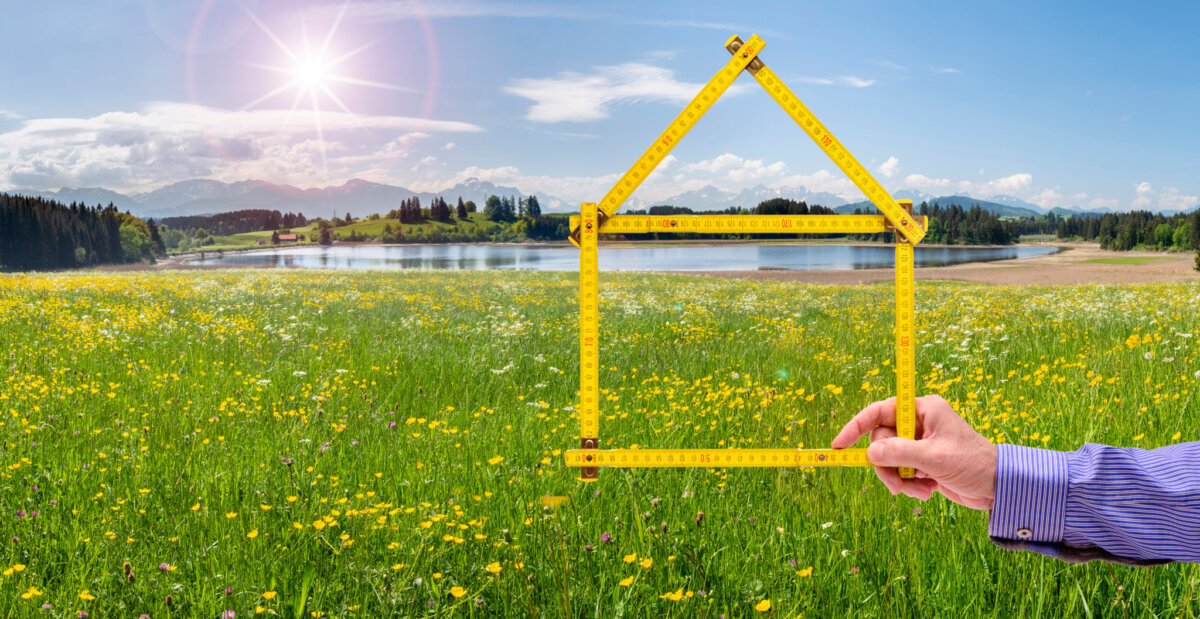When describing real estate, “Metes and Bounds” is one of the oldest and most widely used methods. This system of land description has been in use for centuries, offering a detailed and precise way to define property boundaries. Whether you’re buying, selling, or just curious about property descriptions, understanding metes and bounds can help you navigate the often complex world of real estate.
What Are Metes and Bounds?
Metes and bounds refer to a system of describing land or property by specifying its boundaries. This method uses physical landmarks, directions, and distances to outline the perimeter of a property. Unlike the rectangular survey system, which relies on a grid-based approach, metes and bounds descriptions are often irregular and tailored to the unique shape and features of the land.
- Metes: Refers to the measurement of distance between two points. This could be described in feet, meters, or any other unit of measurement.
- Bounds: Refers to the physical boundaries or landmarks that define the property’s edges. These could be natural features like rivers, trees, or rocks or artificial markers like roads, fences, or monuments.
The History of Metes and Bounds
The metes and bounds system originated in England, where it was commonly used in the early Middle Ages to describe plots of land. Early settlers brought it to the American colonies, and it became the dominant method of land description in the original 13 colonies.
In the early days of American settlement, land was plentiful, and precise measurements were less critical. As a result, descriptions were often based on easily recognizable landmarks and could be imprecise. However, as land ownership became more formalized, the need for more accurate descriptions grew, leading to more standardized systems like the Public Land Survey System (PLSS).
Despite the rise of these new systems, metes and bounds remain in use today, particularly in the eastern United States, where the original colonial land grants still influence property descriptions.
How Metes and Bounds Descriptions Work
A metes and bounds description typically starts at a well-defined point of beginning (POB). It proceeds around the property’s perimeter, detailing the direction and length of each boundary line until it returns to the POB. Here’s a step-by-step breakdown:
- Point of Beginning (POB): The description starts at a specific location known as the POB. This could be a survey marker, a building corner, or another well-defined point. The POB is crucial because all measurements and directions are based on this point.
- Direction: The direction of each boundary line is described using bearings, which are angles relative to a reference direction, usually north or south. For example, a bearing might be described as “N 45° E,” meaning 45 degrees east of due north.
- Distance: The length of each boundary line is specified in a unit of measurement, such as feet or chains. For example, a boundary might be described as “150 feet” from one point to another.
- Landmarks and Monuments: Physical features or artificial markers that define the boundary lines are identified. These could be trees, streams, stakes, or walls. The description might say, “to the large oak tree” or “along the stone wall.”
- Returning to the POB: After describing all the boundary lines, the description must close the loop by returning to the POB. This ensures that the property is fully enclosed and the boundaries are accurately described.
Advantages and Disadvantages of Metes and Bounds
Advantages:
- Custom Fit: Metes and bounds are particularly useful for irregularly shaped parcels of land, as the descriptions can be tailored to fit the unique contours of the property.
- Historical Value: In areas where land has been in the same family for generations, metes and bounds link to the past, preserving the original descriptions of the land.
- Flexibility: This system allows for a high degree of flexibility in describing properties, especially when natural features significantly define boundaries.
Disadvantages:
- Complexity: Metes and bounds descriptions can be complex and challenging to interpret, significantly when the landmarks used in the original description have changed or disappeared over time.
- Ambiguity: Because the system relies on physical landmarks, descriptions can become ambiguous if those landmarks are no longer recognizable.
- Inconsistency: The lack of standardization can lead to consistent descriptions of the same property, mainly if multiple surveys have been conducted over time.
Common Issues with Metes and Bounds
Despite its long history of use, the metes and bounds system has challenges. Some common issues include:
- Disappearing Landmarks: Over time, natural features like trees or rivers may change or disappear, making it challenging to identify the original boundaries. This can lead to disputes over where the actual property lines are located.
- Human Error: Surveyors are human, and mistakes can happen. Suppose an early surveyor made an error in measurement or direction. In that case, it can cause ongoing problems for property owners.
- Interpretation Differences: Because metes and bounds descriptions are often written legally and may use outdated terms or references, different parties may interpret the description differently, leading to disputes.
Modern Use of Metes and Bounds
Metes and bounds are still used today, particularly in older or more rural areas where the land has yet to be subdivided using a more modern system. However, modern technology, such as GPS and GIS (Geographic Information Systems), has made defining and recording property boundaries much more accurate and reliable.
Surveyors often use these technologies to create more precise maps and descriptions, which can then be used to update older metes and bounds records. This helps reduce some ambiguity and inconsistency that can arise from older descriptions.
Conclusion
Metes and bounds is a time-honored method of land description that has stood the test of time. While it may have challenges, it remains a valuable tool for defining property boundaries, particularly in areas with irregularly shaped parcels or significant historical value. Whether you’re a property owner, a real estate professional, or simply someone interested in the history of land use, understanding metes and bounds can provide valuable insights into how land is described, divided, and owned.










Leave a Reply